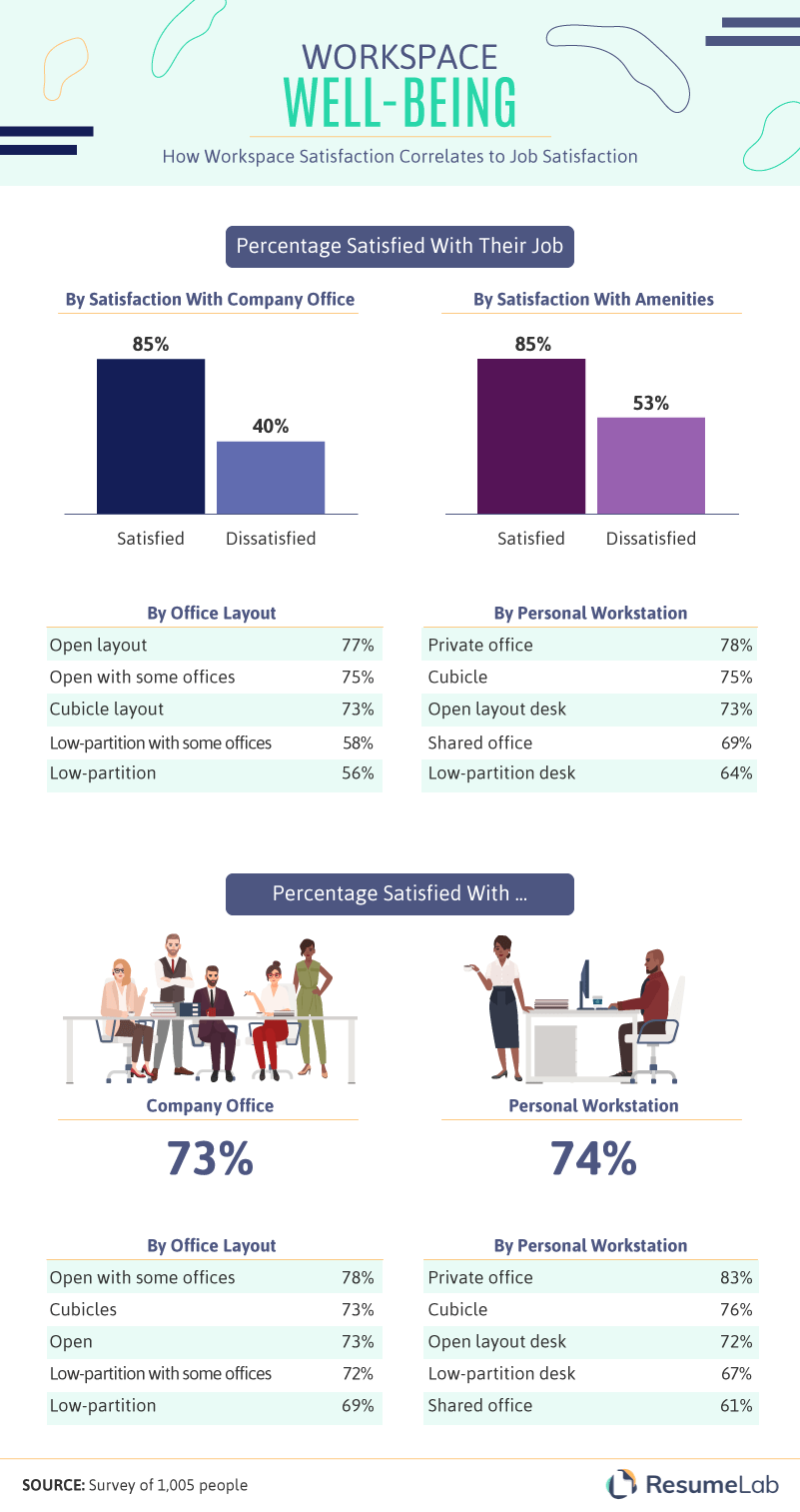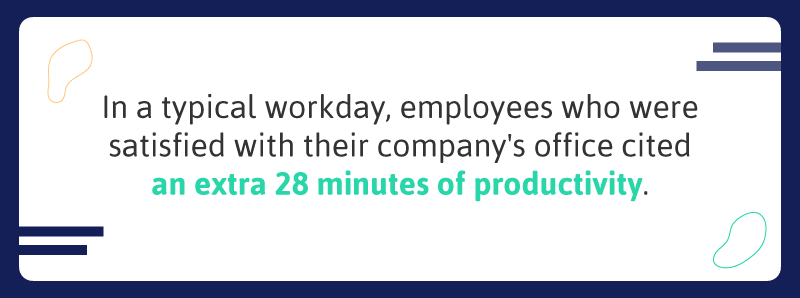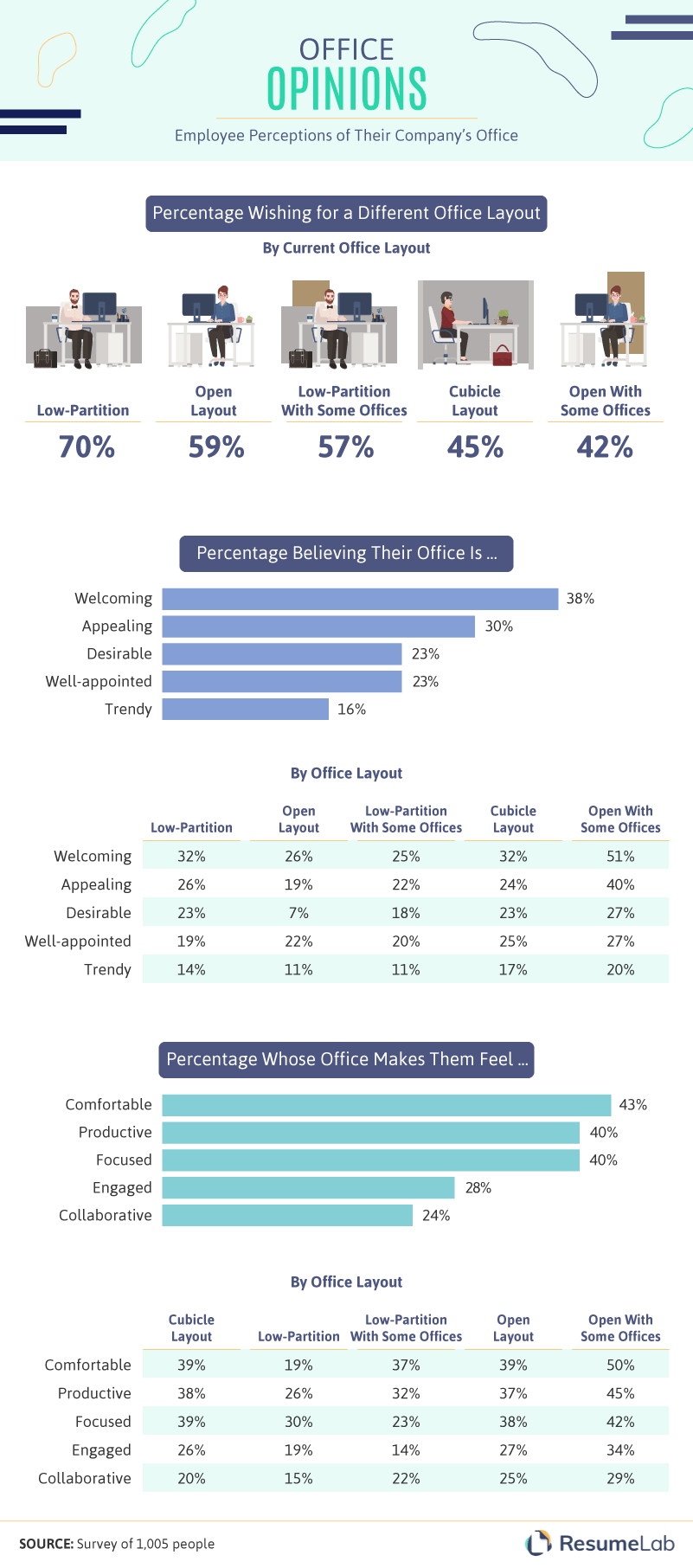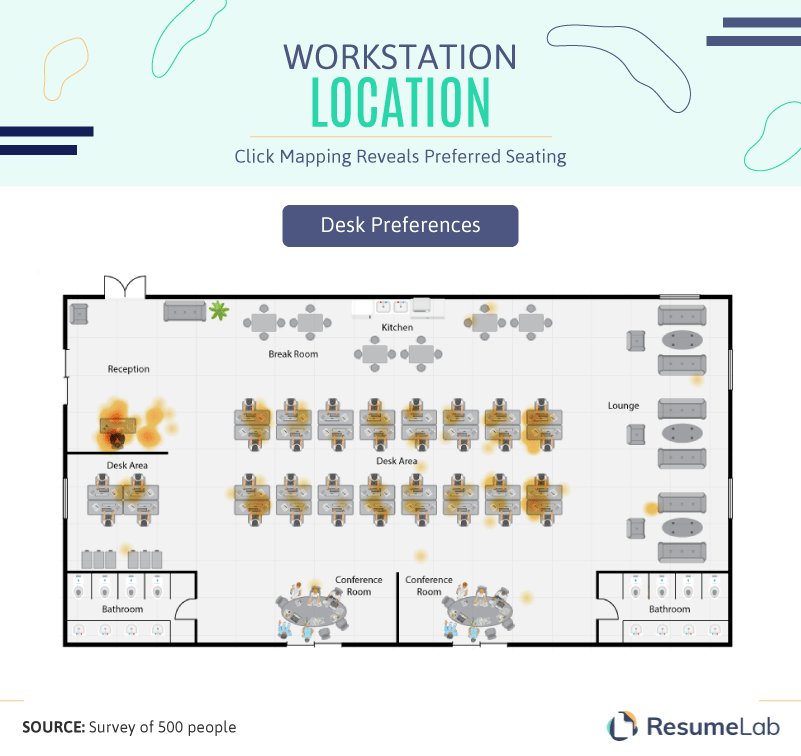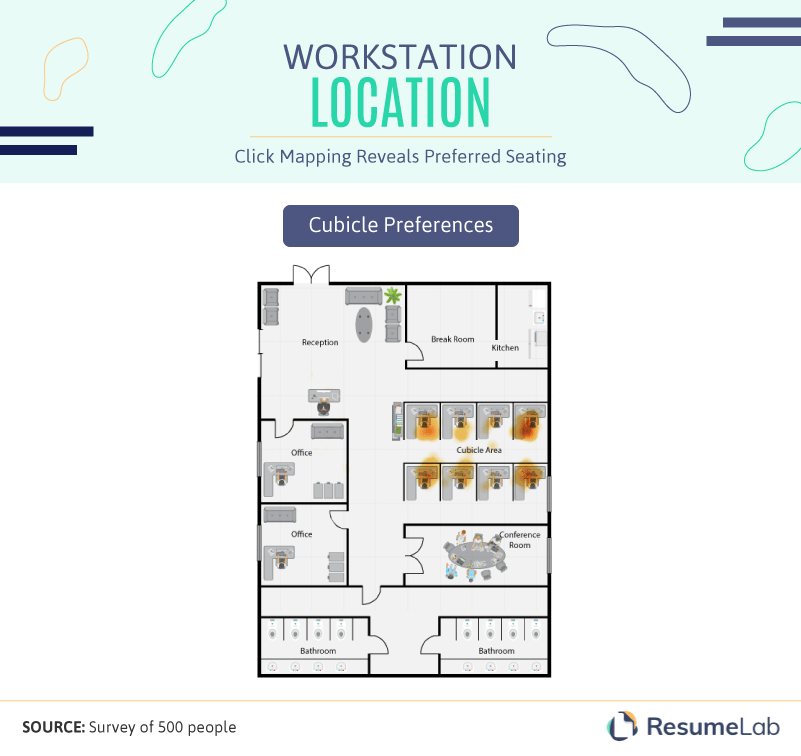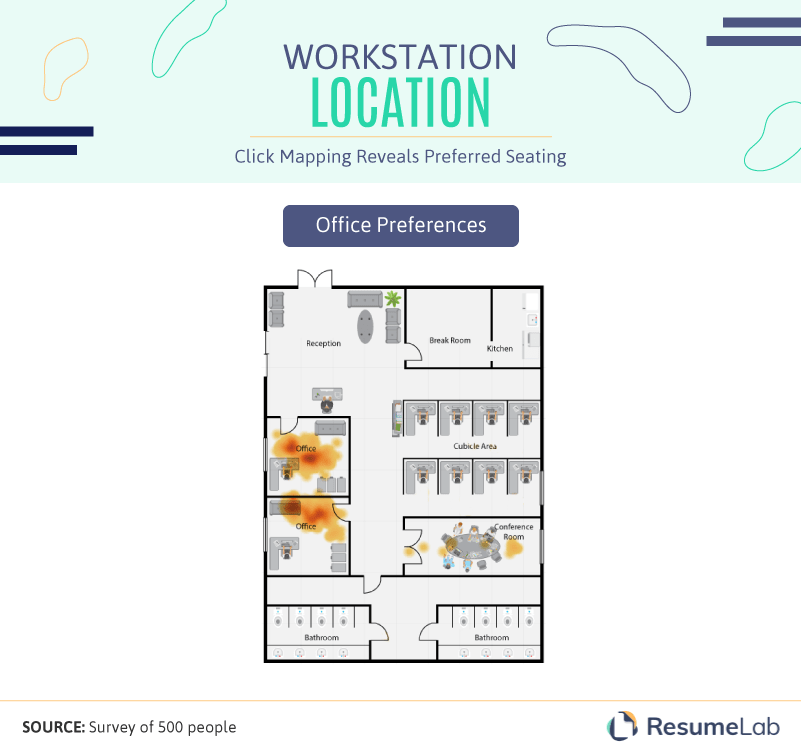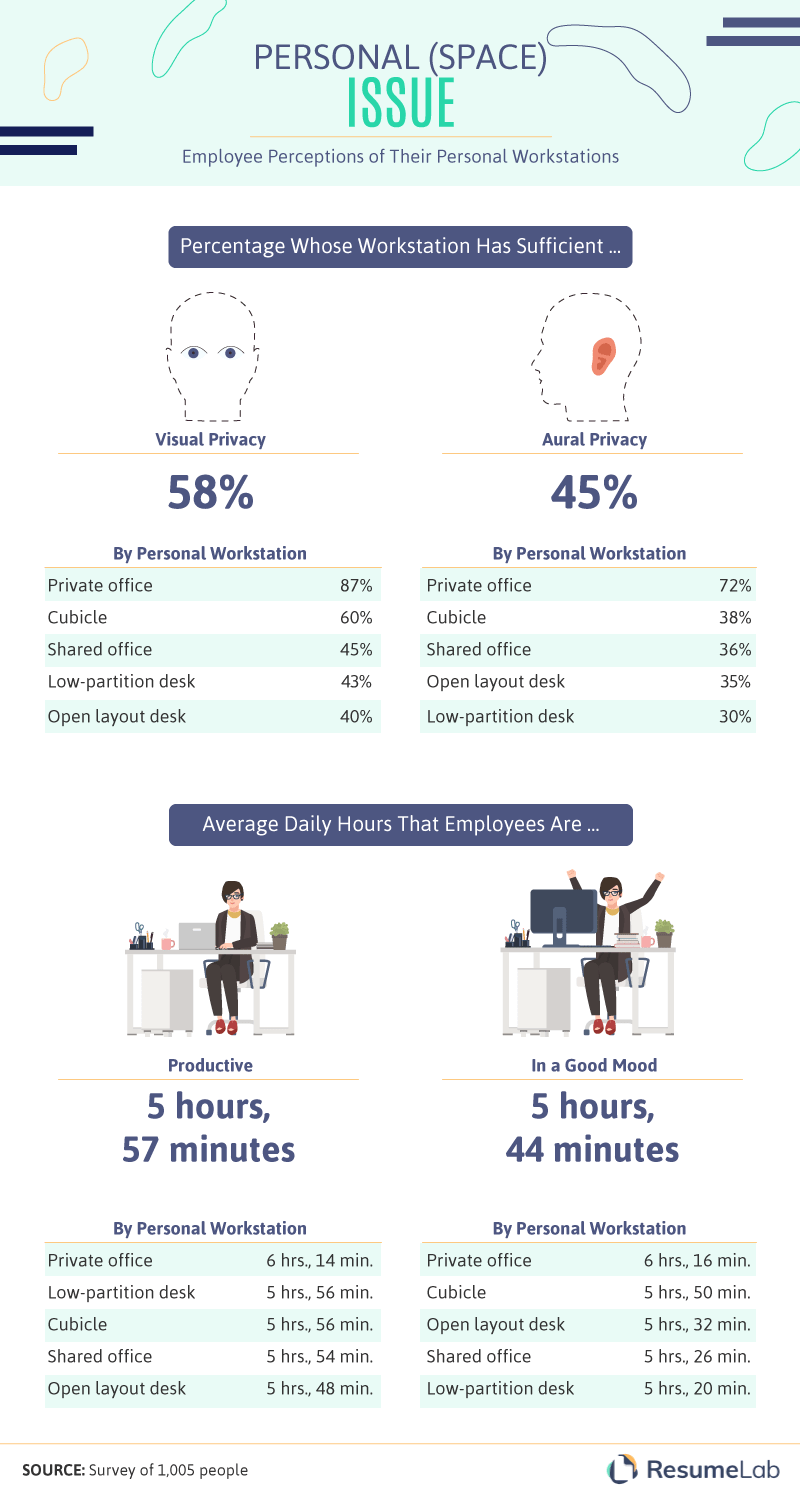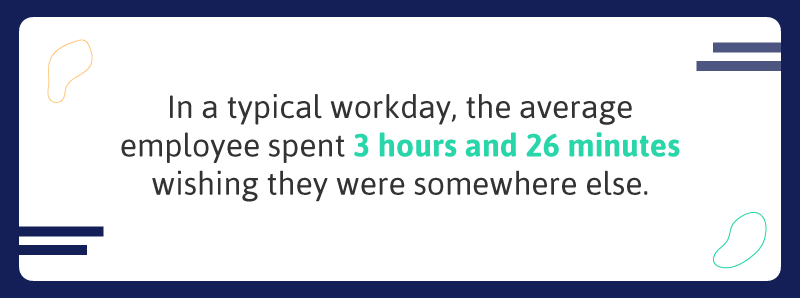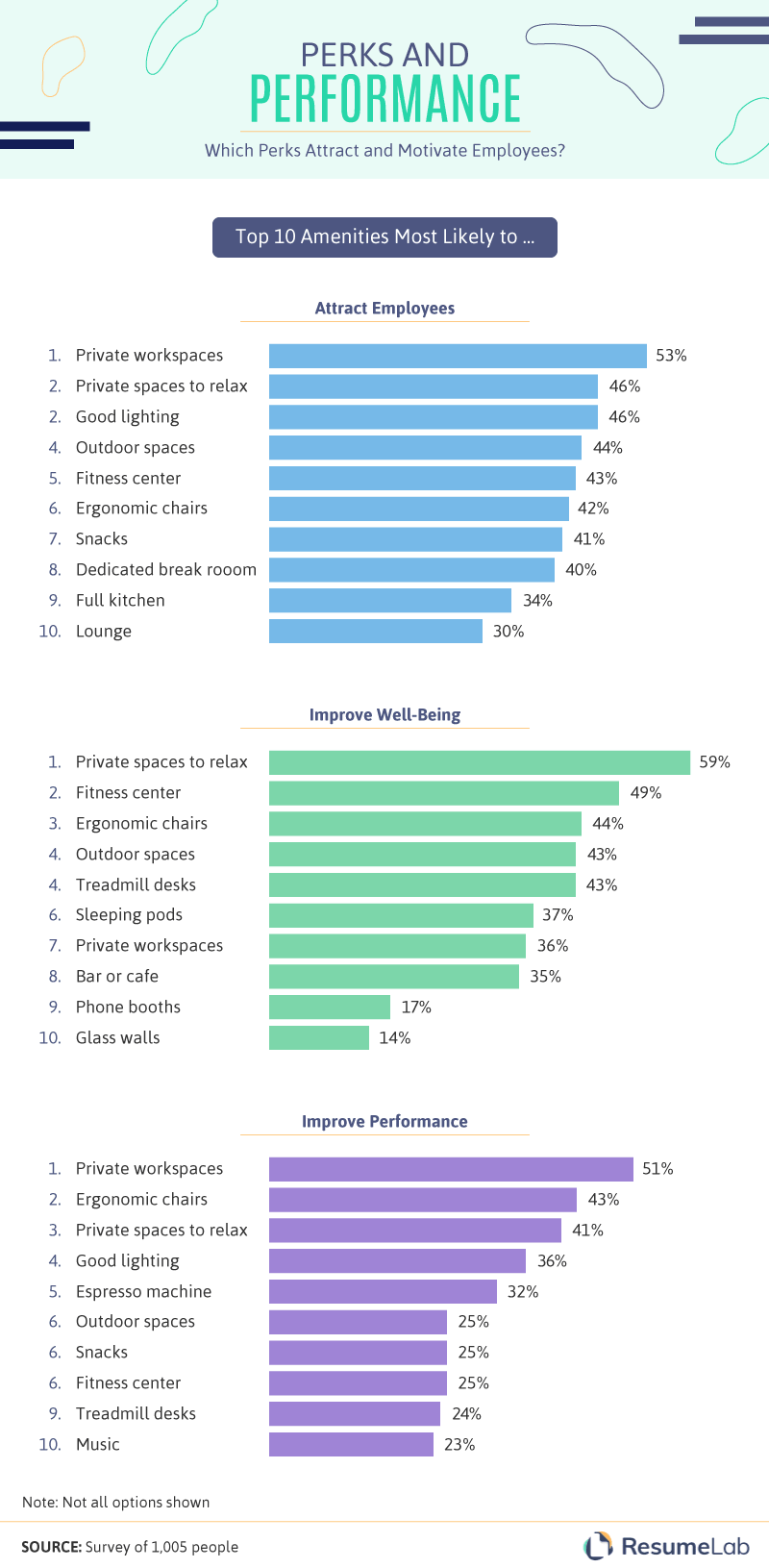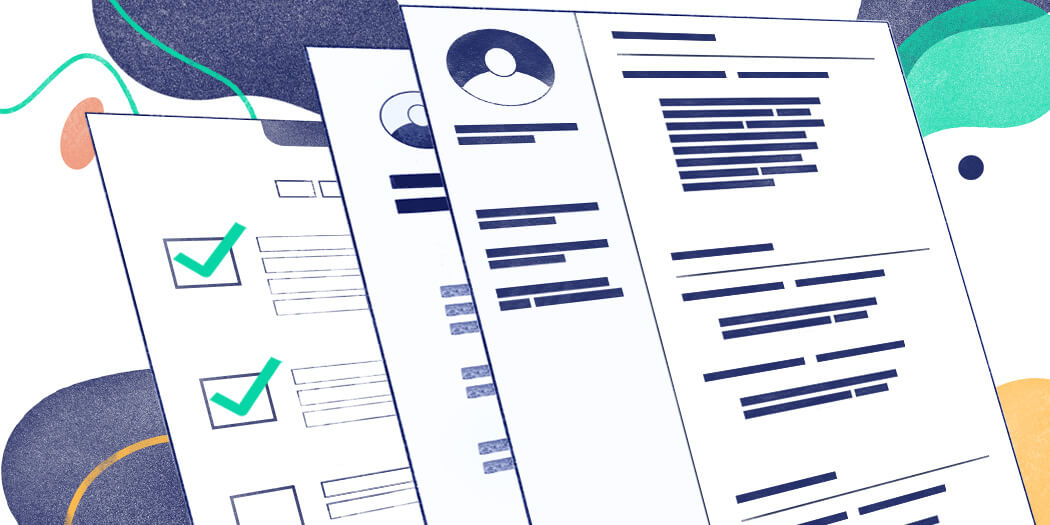
As generations enter and exit the workforce, companies will continue to evolve. Office culture has changed dramatically since the 1950s – in dress, teamwork, and even diversity – but the latest focus seems to concern office layouts. From cubicles and open floor plans to lounges and kitchens, workplace changes often come with the intention to increase productivity and employee happiness.
But are these changes making a difference? Are employees really happier and more productive when breaking down walls and giving them extra amenities? To learn which workplace features are the most beneficial, we surveyed over 1,500 employees about their perceptions of workspaces and various amenities. Keep reading to see what we found.
Satisfaction Guaranteed

As unemployment dips to the lowest rate in over 50 years, job satisfaction across America has increased. In one study, 51% of Americans reported being satisfied in their jobs, but the workforce still has improvements to make. One area for improvement seems to be office spaces and amenities, and employers have a great incentive to make some upgrades: those who were satisfied with their company’s office and amenities were significantly more likely to be satisfied with their job.
Interestingly, those working in an open layout reported the highest job satisfaction. Employees whose companies offered an open layout with some private offices also had high employee morale, with 75% reporting job satisfaction. But even with open layouts leading to job satisfaction, employees were even happier when their personal workstation was a private office.

There’s a well-known link between satisfaction and productivity in the workplace, and when it comes to office layout, the same could apply. In a typical workday, employees who were satisfied with their company’s office clocked in an extra 28 minutes of productivity. Unfortunately, only 73% and 74% of employees said they were satisfied with their office and personal workstation, respectively. While an open layout with some offices was the most satisfying layout, private offices were significantly more satisfying than other personal workstations. It’s also worth noting that the long-derided cubicle outranked everything except for a private office.
Comfortable and Collaborative

The office layout is very rarely up to the employees, but given how critical workspaces are for employee success, it would benefit employers to acknowledge the wishes of their staff. Low-partition layouts seemed to be the worst for offices – 70% of employees working in offices with this layout wished they had a different one. Nearly 60% of those working in open layouts also wished for a different floor plan. But open layouts aren’t completely doomed. Only 42% of employees working in open layouts with some offices wished for a change – making it the most accepted layout of all.
Open layouts with some offices were also the most likely to be called welcoming, appealing, desirable, well-appointed, and trendy. Only 38% of all employees said their office was welcoming, yet over half of employees working in open layouts with some offices said the same. Similarly, while just 30% of employees overall and 24% of those working in cubicles said their office was appealing, 40% said the same of their open layout with some offices.
But it’s not just about how offices look. Only 43% of people said their office made them feel comfortable, while 40% each said it made them feel productive and focused. Again, employees working in open layouts with some offices were more likely to report that their office made them feel comfortable, productive, and focused, as well as engaged and collaborative. On the other hand, low-partition layouts were the least likely to make employees feel comfortable, while low-partition layouts with some offices were the least likely to make employees feel engaged.
Take Your Pick
Open layouts make it so that everyone sits in the same room – upper-level executives and entry-level workers sit shoulder to shoulder. But where you sit at work can impact your career more than people think. While research has shown sitting next to the boss comes with many perks (and some drawbacks), changing seating has been shown to be an even better technique to strengthen teams and give workers fresh perspectives.

However, employees may not be fully on board with switching it up. Over half of employees said there wasn’t any other area in the office where they’d prefer their workspace to be. In an open layout, the best place to sit seemed to be the reception area, but for those required to sit at a computer station, the outside corners were more enticing than the inside. Even when the office size decreased, employees preferred to sit in areas farther away from the masses – likely for more privacy.
While privacy may be hard to come by in an open layout office, employees still gravitated toward corner desks when separated by cubicles. But when given the choice of being in a private office, there was no solid theme. For bigger offices, people slightly preferred the office located farthest in the back, even more so than a bigger corner office. And when office size decreased, employees equally preferred the office closest to the reception area and the office closest to the bathrooms.
Privacy, Please

Open floor plans were designed to bring employees together – theoretically, breaking down walls means more face-to-face interactions, easier communication, and increased collaboration. Cynical employees might say that it’s also a great way for an employer to save money. But without offices or cubicles, everyone and everything is seen and heard by all. Open floor plans aren’t the only layout with this problem, but they are the layout where the issue is the worst – compared to 87% of employees who said their private office had sufficient visual privacy, just 40% said the same of their open office desk.
Unsurprisingly, private offices offered a level of aural privacy that no other layout did: While 72% of employees said their private office had aural privacy, less than 40% of employees with every other layout said the same.

Visual and aural privacy also seemed to be heavily tied to employee productivity and mood. On average, employees said they were productive for five hours and 57 minutes. But put an employee in a private office, and their productivity jumped to six hours and 14 minutes. Open office desks resulted in the least productive time, with an average of five hours and 48 minutes.
Open office desks may not have been the best for productivity, but employees reported being in a good mood for an average of five hours and 32 minutes daily, longer than that of employees in shared offices and low-partition desks. However, private offices once again topped the chart, leaving employees in a good mood for six hours and 16 minutes, on average.
Employee Wants and Needs

Happy and motivated employees can make or break a company’s success, but it isn’t always about money in their pocket. With so much emphasis on a healthy work environment, an office’s layout may be enough to attract or turn off employees and improve well-being or performance. When it came to attracting employees and improving performance and well-being, private workspaces were named the top amenity. Private spaces to relax, on the other hand, were the amenity named most likely to improve well-being.
Going out of the box to attract employees, or increase their well-being and productivity, doesn’t seem necessary, though. We also learned that only 20% of respondents said that sleeping pods would attract them to an employer and increase their productivity. Even providing more food and beverage options wouldn’t make employees much happier – only 21% and 18% of respondents said free soft drinks and vending machines would improve their well-being at work, respectively.
Work Where You Want
Employee satisfaction is more important than ever – from having a work-life balance to providing amenities to make the workplace more enjoyable, offices are changing across the country. Amenities are only one part of the equation, though. Making employees happy may have more to do with the style of the office. And despite the popularity of open office plans, they might be a productivity killer. Adding some private offices to the open floor plan may not only increase productivity, but also it can improve employees’ well-being and job satisfaction.
There are also plenty of creative ideas to boost employee morale, but you need to listen to your employees first. Anonymous surveys are a great way of discovering what might be missing in the workplace. And don’t forget to track morale indicators and KPIs, such as turnover, absenteeism, and accident rates.
While it’s up to employers to make decisions regarding workspaces and office style, employees can be on the lookout for companies that offer the layout most appealing to them. Once you’ve found a company that fits your needs, polishing your resume is the next step to landing the job. At ResumeLab, our examples and comprehensive guides can help make your application stand out from the rest. To learn more, visit us online today.
Methodology and Limitations
We surveyed 1,505 white collar employees using the Amazon Mechanical Turk platform. 1,005 respondents reported on their experiences and perspectives regarding their career, and 500 respondents indicated their preferences for workspace locations. Our respondents ranged in age from 18 to 74, and the average age was about 37 and a half. To ensure that respondents took our survey seriously, all respondents were required to identify and correctly answer a carefully decoyed attention-check question. Our margin of error was 3% with a 95% confidence interval.
In many cases, questions and responses have been rephrased for clarity or brevity. To help ensure statistical accuracy, outliers have been removed where appropriate. These data rely on self-reporting, and strict statistical testing has not been performed. Potential issues with self-reported data include but are not limited to exaggeration, selective memory, and attribution errors on the part of respondents.
Sources
Fair Use Statement
Employers should be on the same page as their employees, and open communication is often key to a productive and happy organization. If you want to start the conversation with data to back you up, feel free to share our study. The graphics and content found here are available for noncommercial reuse. Just don’t forget to link back to this page to give the authors proper credit.
About Us
Our resume builder & CV maker have helped thousands to find their dream job in a workplace suited for their needs.
On our website, you can find useful tips on how to write a resume or resume summary examples, but also selections of professional resume templates.





